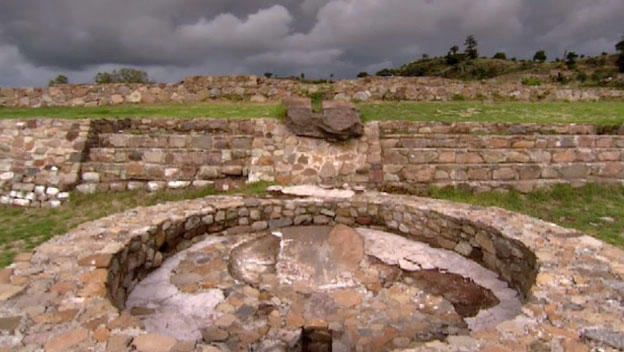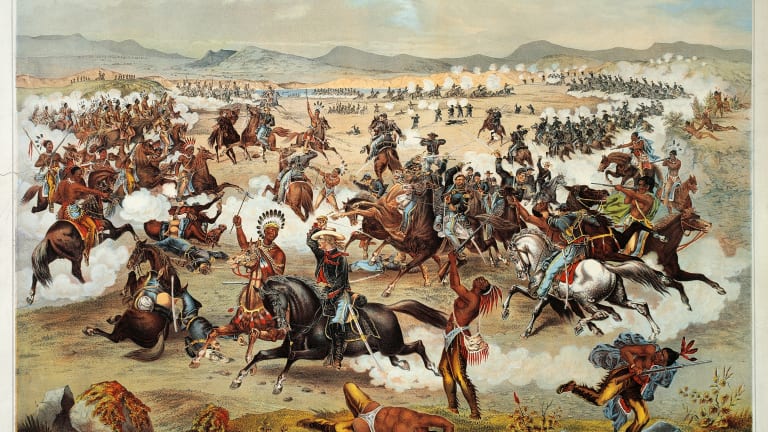In schools, it is taught that Christopher Columbus was the first person who found the Americas. In many textbooks, history begins in 1776, while the events that happened earlier are not mentioned. The facts that are usually taught to students involve the journey of Columbus, transferring goods and people, and connecting Europe with new continents. However, the opposite perspective on this topic refers to rejecting that Columbus discovered both Americas. A closer look at the details of this part of history allows understanding that this discovery was made earlier, while its consequences were destructive to the local population (Anderson, 2015). There is the evidence that some historical persons have already visited the Americas, and, more to the point, there were numerous Indian tribes and several ancient civilizations, such as the Aztecs and Inca (Picture 1). It is also the alternative point of view that Columbus conquered and monetized these continents, but he did not open them.
The first argument that supports the claim that Columbus did not discover the Americas refers to the fact that these continents were settled more than 15,000years ago (Head, 2019). The great ancient civilizations blossomed and faded away before the arrival of Columbus in 1492. Furthermore, Viking explorers were in North America in approximately the tenth century. Their journeys were also related to the visits to Greenland and nearby islands. The first settlement in America was established by Eric the Red and later by his son, and both of them failed. These facts show that Columbus is not an actual discoverer of America.

With the coming of Europeans headed by Columbus, North and South Americas changed dramatically. The newcomers brought foods, weapons, and diseases that were not known to the local population (Head, 2019). The battles for territories between Europeans and Native Peoples were brutal and unfair since the latter had nothing to oppose the conquerors that were more technologically-equipped. As a result, the majority of Indian tribes were exterminated in numerous battles (Picture 2). Another argument that reflects the discrimination from Europeans is special boarding schools for locals, which were used to separate children and their families. The reservations created for Natives also confirm that Europeans did not just come to America, but also devastated its lands and killed people. As stated by those who argue against Columbus Day, it was a genocide that is now described and taught to students in terms of patriotism (Head, 2019). Indeed, little attention is paid to the rights and struggles of Indigenous peoples during the social studies lessons.

Today, the descendants of Native populations try to rethink the history and achieve a correct perception of their past. For example, the representative of the Tulalip Tribe, Renee Roma Nose, states that they want understanding and mutual support, suggesting that Columbus Day should be downplayed. When a child comes home from the school and tells that Columbus was a brave sailor, it causes frustration since the truth is much deeper (Anderson, 2015). From the point of Indigenous peoples, the history should be taught from different sides, and the battles and murders should be clear to students as well. It seems that this approach is the most relevant and fair regarding both the descendants of Europeans and Native Americans.
The following prompt questions can be posed to students:
- Why do you think the US government did not include the details of Columbus’ discovery in school programs?
- Why this misconception should be addressed if the events occurred several centuries ago, and they cannot be changed?
- What is the importance of teaching the truth about the discovery of Americas to students during history classes?
- How to resolve this misconception so that both the descendants of Native Americans and Europeans would be satisfied with the decision?
To engage students in thinking about and discussing the given misconception, it seems beneficial to design an activity that will begin with the teacher’s explanation of the misconception and presentation of the key details. For example, the presentation can be created to include pictures, along with the excerpts from audio recordings and documentary films. After that, the students can be divided into fourth groups, and each of them can be given one of the above questions. After the critical thinking and teamwork, all the questions can be discussed together, so that the teacher can guide the class and add some important details regarding the misconception. The format of group discussion is expected to promote critical thinking skills and the inclusion of the background in the class discussion. With the teacher’s support, students will confirm or reject their ideas and develop arguments.
As for the place of the described activity in the larger unit plan, it would be better to teach it while discussing unfairness and vulnerability topics, or it can be situated in the context of civil rights and socioeconomic backgrounds. This activity can also be used as an example of role-playing, where the students can be divided into groups and speak as Indigenous people, modern Americans, and European settlers. In consistence with the paramount aim of social studies, students should learn to become aware and active citizens to make informed decisions. It seems that the integration of this misconception would serve as a vivid example of the need for civil society and reasoned solutions, with the emphasis on culture and democracy.
References
Anderson, M. D. (2015). Rethinking history class on Columbus Day. The Atlantic. Web.
Head, T. (2019). Did Christopher Columbus actually discover America? ThoughtCo. Web.

